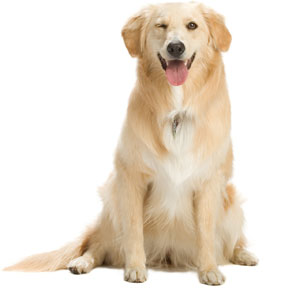1. I just adopted my new pet. He seems healthy—do I still need to take him to the veterinarian right away?
Yes! Taking your new pet (whether dog, cat, hamster, or any other living thing) to the veterinarian should be your first priority. This is especially true if you have other pets. It’s a good idea to make sure your new pet is healthy and doesn’t have any diseases or viruses he or she could transmit to other animals in the house.
Your first veterinarian visit should be an enjoyable experience. You’ll learn all kinds of things about your new companion! Plus, you’ll want your veterinarian to get to know your pet during times of health so he or she will easily be able to recognize abnormal behavior if your pet ever becomes ill.
2. How do I find a veterinarian?
The best way to find a veterinarian is by word of mouth. The animal shelter or rescue group where you adopted your pet may have a good recommendation for you. If not, ask your friends who is their veterinarian. If you don’t have friends with pets, ask folks who are walking their dogs in your neighborhood about where they take their pet for veterinarian care.
You can also choose a veterinarian out of a phonebook, directory, or an on line search. A great online veterinarian finder can be found here.
 3. How often does my pet need a checkup?
3. How often does my pet need a checkup?
For proper preventative care, your dog or cat should be examined by a veterinarian twice a year. As your pet ages, though, your veterinarian may recommend more frequent visits. Between visits, though, make sure to pet your dog or cat often and take notice of any new lumps, scabs, or other wounds. Look for changes in your pet’s breath, behavior, energy level or appetite, as these may be cause for concern. Notice if your pet is scratching himself more than usual. Call your veterinarian if you notice any of these or if you have other concerns.
4. What can I expect from a regular checkup visit with my dog or cat?
First, your veterinarian will probably ask you all about your pet. They’ll want to know if your dog or cat has had any vomiting or diarrhea, coughing, sneezing, itching, or excessive thirst. They’ll also ask if your pet’s energy level and appetite are normal, and they may inquire about your pet’s diet.
Your dog or cat will then be weighed and assessed to determine if he or she is too heavy or too thin. Then, the veterinarian or veterinary technician will check for fleas using a special flea comb. Your pet’s temperature will also be taken.
A physical examination is performed. The veterinarian will check your pet’s ears, eyes, nose, teeth, and lymph nodes and listen to the heart and lungs. They’ll feel your pet’s abdomen by hand to check for pain or masses. They’ll also check the condition of your pet’s skin. In some cases, they will also examine your pet’s legs, hips, and joints. Your pet’s external genital area will be checked. Sometimes a rectal examination is also performed.
Your veterinarian may order a CBC (Complete Blood Count) and other diagnostic tests, including a fecal exam to check for parasites.
5. What kinds of preventative treatments might my veterinarian recommend?
Your veterinarian will certainly recommend a good-quality diet, in the proper amounts, to keep your pet thin and healthy. A preventative dental plan (like regular tooth-brushing) is a common recommendation as well.
Your veterinarian will also stress the importance of avoiding parasites, and will suggest options for flea and tick prevention and control. Internal parasites, like roundworm, are potentially harmful, and your veterinarian may suggest periodic de-worming treatments or products that treat and control internal parasites monthly. One internal parasite in particular, heartworm, can be deadly. It is suggested that pets be on a heartworm preventative year round. Prevention is cheaper than treatment.
Vaccines will also be discussed and administered as needed. Other preventative measures for keeping pets healthy may be discussed, such as exercise, socialization, and behavior training.
6. What about dental treatments? Does my pet need to go to the dentist like I do?
Dental health is as important to your pet as it is for you! In fact, dental problems in dogs and cats can even lead to heart and kidney disease, so caring for your pet’s teeth is absolutely essential. First, make sure you follow the preventative care plan prescribed by your veterinarian. Often your veterinarian will recommend daily brushing along with other less-helpful home care activities like chew toys, rinses, etc.
Most pets will need professional dental care from time to time. Usually this will be performed by a licensed veterinarian with your pet under anesthesia, and will clean the teeth below the gumline and the inner and chewing surfaces of the teeth, fully examine and probe the gumline, and possibly obtain dental x-rays of the tooth roots. Rotten, loose, and painful teeth may need to be extracted.
Dental care by a vet is performed on an as-needed basis. Some pets require professional cleaning every 6-12 months; some pets not as often–but a dental check-up should be done every year.
 Like this article? Feel free to post it on your site!
Like this article? Feel free to post it on your site!
All we ask is that you credit www.Adoptapet.com
(and please keep it as a live link).
Thanks!






